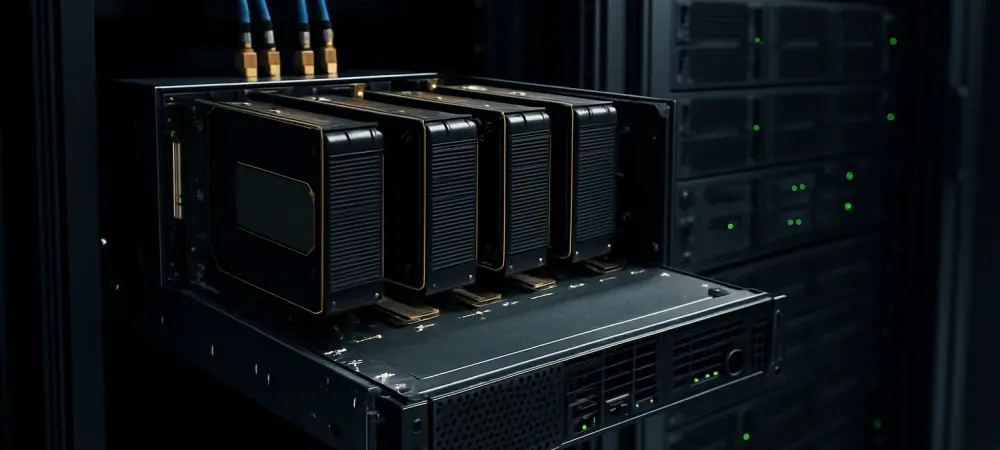I’m thrilled to sit down with Dominic Jainy, a seasoned IT professional whose deep expertise in artificial intelligence, machine learning, and blockchain has positioned him as a thought leader in cutting-edge technology applications. Today, we’re diving into the exciting world of cloud computing and AI infrastructure, specifically focusing on how advanced GPU technology is transforming industries. Our conversation explores the impact of high-performance computing platforms, the democratization of AI resources for businesses of all sizes, and the innovative potential of next-generation hardware in driving real-world solutions.
Can you start by telling us about the mission behind platforms like Hyperstack and how they’re shaping the AI landscape?
Absolutely. Platforms like Hyperstack are all about making powerful AI computing accessible to everyone, from startups to large enterprises. The mission is to break down the barriers that have traditionally kept cutting-edge technology out of reach for many. By offering on-demand access to high-performance resources, these platforms enable businesses and researchers to innovate without the burden of massive upfront investments in hardware. It’s a game-changer for industries looking to leverage AI for everything from data analysis to product development.
What makes the integration of a GPU like the NVIDIA RTX Pro 6000 SE such a significant step for AI-as-a-Service platforms?
The addition of something like the NVIDIA RTX Pro 6000 SE is huge because it brings top-tier performance to the table. This GPU is built for heavy lifting with specs that support massive datasets and complex workflows. It’s not just about raw power; it’s about enabling users to tackle next-level projects—think training sophisticated AI models or rendering detailed 3D environments—without needing to own the hardware. This kind of integration means platforms can offer unparalleled speed and scalability, which is critical for staying competitive in AI development.
How does a GPU with features like 96 GB of memory and 1.8 TB/s bandwidth impact the kinds of projects users can take on?
Those specs are a dream for anyone working on intensive tasks. The 96 GB of memory allows users to handle enormous datasets without bottlenecks, which is crucial for things like training large language models or running complex simulations. The 1.8 TB/s bandwidth ensures data moves lightning-fast, reducing lag in real-time applications like 3D rendering or virtual reality development. This kind of power opens up possibilities for data scientists, developers, and even creative professionals to push boundaries in ways that were previously unimaginable without enterprise-level budgets.
Who do you think stands to gain the most from access to this level of computing power through a cloud platform?
Honestly, smaller players like startups and independent researchers benefit immensely. They often lack the capital to invest in high-end hardware, so having access to a GPU of this caliber through a cloud platform levels the playing field. But it’s not just them—larger enterprises also gain by avoiding the overhead of maintaining physical infrastructure. I’d say anyone working on AI-driven innovation, from healthcare to gaming, can tap into this to accelerate their projects and bring ideas to market faster.
What are some specific applications or industries you’re excited to see leverage this kind of GPU technology?
I’m really excited about its potential in healthcare and entertainment. In healthcare, this technology can speed up drug discovery by running massive simulations or analyzing patient data for personalized treatments. In entertainment, real-time rendering for movies or virtual reality experiences can reach new levels of realism. Even fields like automotive design, where 3D modeling is key for prototyping, stand to gain from faster, more detailed simulations. The possibilities are endless when you remove hardware limitations.
How does a platform like Hyperstack address affordability and scalability for users who might otherwise struggle with accessing high-end GPUs?
Affordability comes down to the subscription or pay-as-you-go model that cloud platforms often use. Instead of shelling out hundreds of thousands of dollars for hardware, users pay only for what they need, when they need it. Scalability is just as important—platforms like Hyperstack let users ramp up resources for a big project or dial back during quieter times. Compared to owning and maintaining hardware, which involves costs for power, cooling, and upgrades, this approach is a no-brainer for most organizations looking to stay lean and agile.
Can you walk us through what it’s like for someone new to start using advanced GPU resources on a cloud platform?
It’s surprisingly straightforward. Typically, a user would sign up on the platform, choose the resources they need—like access to a specific GPU—and configure their environment based on their project requirements. Many platforms offer user-friendly interfaces and support to help with setup. For larger-scale needs, there’s often a reservation system to ensure availability. While some technical knowledge helps, especially for optimizing workloads, most platforms aim to make the process accessible, even providing tutorials or customer support to get users up and running quickly.
What is your forecast for the future of AI infrastructure and the role of cloud-based GPU access in driving innovation?
I see AI infrastructure becoming even more democratized over the next decade. Cloud-based GPU access will be at the heart of this shift, as it continues to lower the entry barriers for innovators worldwide. We’re likely to see more specialized hardware tailored for specific AI tasks, and platforms will evolve to offer even greater flexibility and integration with other tools. The result will be an explosion of creativity and problem-solving across industries, from small teams building groundbreaking apps to global efforts tackling challenges like climate change. The future is bright, and cloud technology will be the backbone of that progress.

